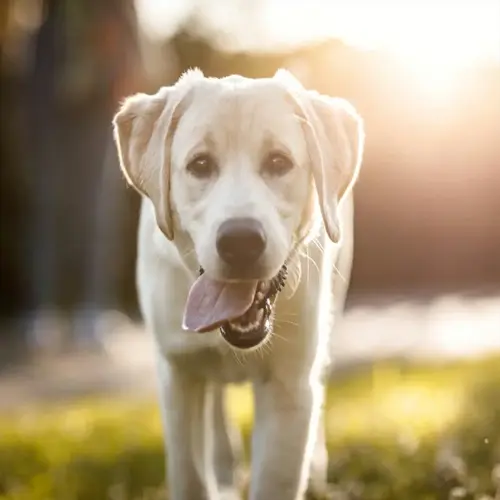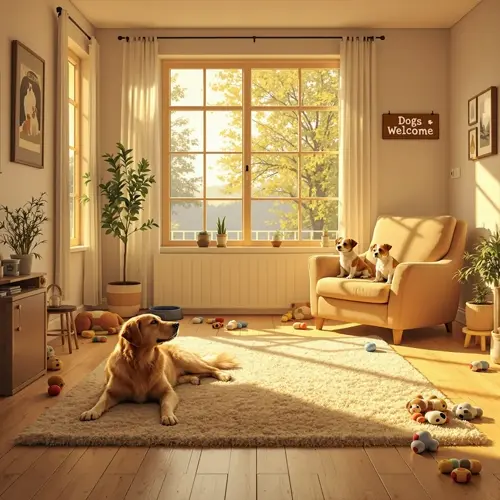Dog Bed Size Guide: Find the Perfect Fit

Written by
Wang Jiahao
Reviewed by
Prof. Henry Webster, Ph.D.Correct dog bed size requires precise body length and shoulder measurements
Sleeping positions determine needed dimensions: stretchers need 20% extra length
Weight categories guide sizing but breed proportions are equally critical
Orthopedic beds demand specific foam density: ≥2.0 lb/ft³ for large dogs
Avoid sizing myths: weight alone doesn't determine perfect bed dimensions
Properly sized beds reduce joint stress and improve sleep quality
Article Navigation
The right dog bed size prevents your dog's joints from aching and stiffness. A correctly sized dog bed distributes your dog's weight evenly. This removes pressure points that can cause discomfort in your dog's body. Your dog needs a comfortable place to rest.
Improper bed sizes restrict their natural flexibility. If the bed is too small, the legs will be cramped. If the bed is too large, there will be no support. At night, your pet may struggle to find a comfortable position. They will also be restless and unable to sleep.
Finding your ideal bed dimensions can significantly enhance your sleep quality. Your pup enjoys more time in a deeper cycle of rest. This results in waking up more refreshed and energized. Creating a personal oasis for your pet is a demonstration of your care. Start measuring today for a better tomorrow!!
Measuring Your Dog Accurately
Always use a flexible tape measure instead of a rigid ruler. It curls around the body of your dog naturally. You receive accurate readings of shoulder length and width. This accuracy prevents you from buying beds that are not wide enough to allow movement or roomy enough for your dog to feel lost.
Position your dog standing normally on a flat surface. Measure from the base of the neck to the start of the tail. Add to this the number 6 for stretching space. Note the widest point of the shoulders. Write down both numbers at once.
During their first year, weigh puppies each month. Growth spurts affect size quickly. A bed that fit last month may be too restrictive now. Regularly monitoring will allow your puppy to feel supported and comfortable during periods of critical development.
Never base a dog's size solely on the dog's breed. For example, my neighbor has a Labrador, and it stayed small, weighing only 55 pounds, while her sister's Labrador weighed 85 pounds. We need to measure the actual dog. Breed average sizes are starting points, not definitive rules for dog size.
Preparation
- Use soft tape measure on non-slip surface
- Have treats ready to keep dog calm
- Measure before meals for consistent weight tracking
- Ensure proper lighting for accurate readings
Body Positioning
- Keep dog standing naturally without restraint
- Measure length during slight forward lean
- Record shoulder width during relaxed breathing
- Avoid forcing unnatural postures
Sleep Observation
- Note maximum stretch during deep sleep
- Record curled vs. sprawled positions
- Measure distance from nose to hind paws in inches/cm
- Track preferred sleeping direction
Puppy Considerations
- Measure weekly during growth spurts
- Anticipate adult size based on breed standards
- Add 25% buffer (e.g., 10 cm/4 inches) for large breeds
- Use temporary bedding during rapid growth phases
Special Cases
- For arthritic dogs: add 15% length (e.g., 8 cm/3 inches)
- Pregnant dogs: measure chest width weekly
- Deep-chested breeds: include extra 5 cm (2 inch) depth buffer
- Senior dogs: prioritize orthopedic support measurements
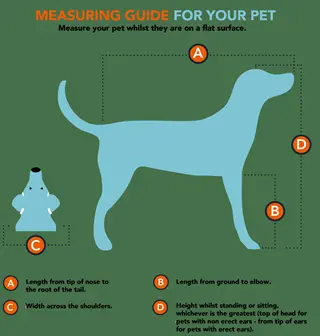
Body Length Measurement
- Position: Dog standing naturally on level surface
- Tool: Flexible tape measure held parallel to spine
- Start point: Base of neck where collar sits
- End point: Base of tail where tail meets body
- Buffer: Add 10 cm (4 inches) for stretching room
- Tip: Measure three times for accuracy
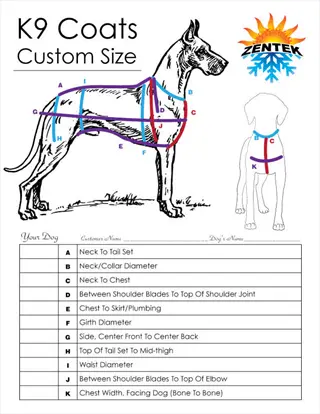
Shoulder Width Technique
- Position: Dog standing square with weight even
- Tool: Tape measure across widest shoulder points
- Landmarks: Outer edges of shoulder blades
- Buffer: Add 15 cm (6 inches) for comfort
- Note: Include fur thickness in measurement
- Common error: Measuring too tightly
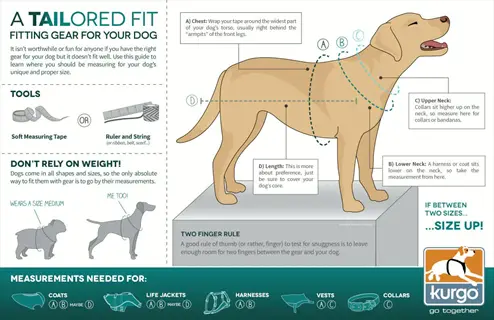
Paw-to-Chest Depth
- Position: Dog standing on hard surface
- Tool: Rigid ruler for vertical measurement
- Start point: Bottom of front paw on ground
- End point: Highest point of shoulder blade
- Buffer: 5 cm (2 inches) minimum clearance
- Breeds: Crucial for deep-chested dogs like Danes
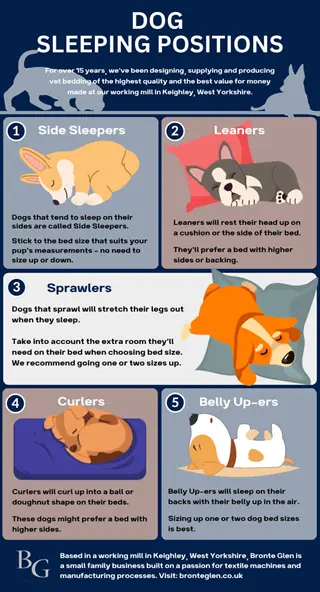
Sleeping Position Documentation
- Timing: Measure during deepest sleep phase
- Position: Record full stretch from nose to hind paws
- Tool: Measure tape along body contour
- Calculation: Add 20% to resting body length
- Example: 60 cm dog needs 72 cm bed
- Breeds: Essential for Greyhounds and stretchers
Puppy Growth Tracking
- Frequency: Weekly measurements for first 6 months
- Method: Compare against breed growth charts
- Buffer: 25% extra space (e.g., 15 cm/6 inches)
- Weight: Use digital scale with bowl attachment
- Adjustment: Size up every 8-12 weeks
- Tip: Photograph beside measuring tape
Dog Sleeping Habits Analysis
Sleepers who prefer curled-up positions tend to prefer cozy spaces for added safety. They curl their legs snug against their body. High-sided bolsters give them a sense of a protective nest. My terrier sleeps this way during thunderstorms. Measure their curled diameter to ensure a proper fit.
Open surfaces are a necessity for sprawlers, who like the maximum amount of stretch. They will stretch their legs wide apart even when sleeping. Rectangular beds are most suitable for these luxurious positions. More length is necessary than the size of their body. My greyhound requires 20% extra space than its length.
Den lovers prefer cave-like beds for their comfort. They are burrowing creatures that prefer areas with covered entrances and tunnels. Dachshunds often show this behavior. Select beds with removable covers that can be easily cleaned. This satisfies their instinct to conceal themselves.
Ensure bed dimensions match sleeping habits perfectly. Curled dogs require circular beds in the size of their curl. Dogs that sprawl need extra-long rectangles, while cave sleep mode needs height to sit. Therefore, take careful note of your dog's sleep positions overnight when evaluating the correct size.
Curled Sleepers
- Dogs curling tightly conserve body heat during 12-14 hours of daily sleep
- Require round or bolster beds with high sides for security and warmth
- Common in small breeds under 20 lbs (9 kg) like Shih Tzus
- Optimal bed dimensions match body length without extra movement space
- Average sleep: 50% curled position during 14-hour rest cycle
Sprawlers
- Dogs stretching fully need maximum surface area for unrestricted movement
- Require rectangular beds 20% longer than body length for comfort
- Common in medium-large breeds 40-80 lbs (18-36 kg) like Greyhounds
- Flat mattresses without bolsters accommodate full-body extensions
- Average sleep: 60% sprawled position during deep REM phases
Side Sleepers
- Dogs sleeping sideways need medium cushioning for hip and joint support
- Require beds with low 6-inch (15 cm) bolsters for proper head elevation
- Common in medium breeds 30-60 lbs (14-27 kg) like Labradors
- Width accommodates full leg extension during 10-12 hour sleep cycles
- Average sleep: 7 hours nightly in side position for optimal recovery
Back Sleepers
- Dogs sleeping belly-up need firm spinal alignment for 8-10 hours nightly
- Orthopedic foam beds with contouring prevent pressure point discomfort
- Common in large breeds 50-80 lbs (23-36 kg) like Golden Retrievers
- Extra width prevents limbs from hanging over edges during deep sleep
- Average sleep: 30% back position during afternoon naps
Den Lovers
- Burrowing dogs need enclosed spaces for 14-16 hours of secure rest
- Covered beds with tunnel entrances satisfy instinctual nesting behaviors
- Common in small-medium breeds 10-25 lbs (5-11 kg) like Dachshunds
- Interior height allows sitting without crouching during waking periods
- Average sleep: 80% den time in cooler environments below 68°F (20°C)
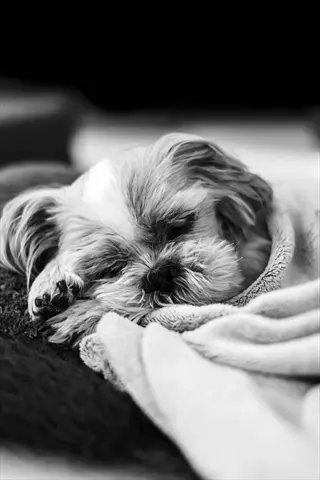
Shih Tzu - Curled Sleeper
- Bed Type: Round bolster bed with high sides provides essential security for anxious small breeds during their 14-hour sleep cycles
- Dimensions: 30-inch (76 cm) diameter circle accommodates 10-16 lb (4.5-7 kg) dogs comfortably without excess space
- Material: Plush faux fur lining retains body heat effectively during colder months below 50°F (10°C)
- Special Feature: Removable machine-washable cover simplifies cleaning after outdoor activities
- Why It Works: Enclosed circular design mimics natural den instincts observed in wild canid relatives
- Tip: Position near family areas to reduce separation anxiety during daytime naps
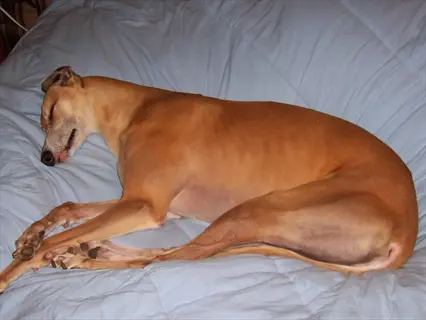
Greyhound - Sprawler
- Bed Type: Extra-long orthopedic mattress accommodates full-body extensions during deep sleep phases lasting 3-4 hours
- Dimensions: 50x36 inch (127x91 cm) surface suits 60-70 lb (27-32 kg) sighthounds needing stretch space
- Material: Cooling gel memory foam regulates temperature during warm months above 75°F (24°C)
- Special Feature: Non-slip rubber base prevents sliding on hardwood floors during active dreaming
- Why It Works: Unrestricted flat surface supports unique skeletal structure requiring alignment
- Tip: Add lightweight cotton sheet for summer use in climates exceeding 80°F (27°C)

Dachshund - Den Lover
- Bed Type: Cave-style design with tunnel entrance satisfies natural burrowing instincts developed over centuries of breeding
- Dimensions: 24x20x18 inch (61x51x46 cm) interior fits 16-32 lb (7-15 kg) long-bodied breeds comfortably
- Material: Insulated polyester maintains consistent warmth during 60°F (16°C) room temperatures
- Special Feature: Machine-washable interior pad handles frequent cleaning from digging behaviors
- Why It Works: Enclosed space reduces environmental stressors for hunting breeds with high anxiety
- Tip: Place heating pad underneath during winter in regions below freezing temperatures
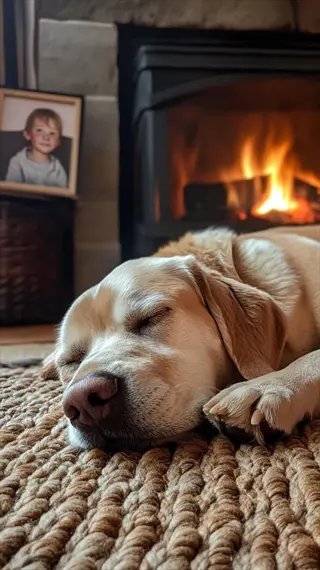
Labrador - Side Sleeper
- Bed Type: Low-bolster rectangle supports hip joints during 8-hour nightly sleep sessions common to retrievers
- Dimensions: 42x32 inch (107x81 cm) surface accommodates 55-80 lb (25-36 kg) adults stretching sideways
- Material: Durable 1200D nylon exterior withstands scratching from active dream movements
- Special Feature: 6-inch (15 cm) bolster height provides perfect chin support for head positioning
- Why It Works: Gentle contour aligns spine during extended recovery periods after exercise
- Tip: Use waterproof liner for puppies under 1 year still developing bladder control
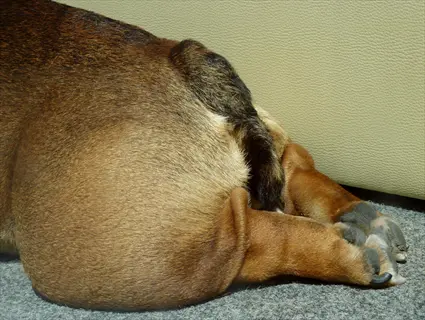
Bulldog - Back Sleeper
- Bed Type: Firm mattress with breathable mesh prevents overheating during 40% of sleep time spent on back
- Dimensions: 38x28 inch (97x71 cm) area suits broad 40-50 lb (18-23 kg) frames needing spinal support
- Material: Hypoallergenic cotton reduces skin irritation risks for sensitive-coated breeds
- Special Feature: Elevated 4-inch (10 cm) edges contain rolling movements during snoring episodes
- Why It Works: Flat non-yielding surface maintains airway alignment in brachycephalic breeds
- Tip: Clean biweekly with enzymatic cleaner to prevent bacterial growth in facial folds
Dog Bed Size Charts by Weight Category
Begin with tiny dogs under 15 lbs (7kg). They require compact beds measuring approximately 20 x 18 in (51 x 46 cm). Bolster beds with low sides are ideal. These tiny puppies require a soothing sense of security. Their small, lightweight frames need gentle support.
Go to small dogs in the 15-25-pound range (7-11 kg). You should use beds that measure 28-35 inches (71-89 cm) in size. Cave-style construction offers the best comfort. These sizes help avoid cramped legs. Don't forget the covers are machine washable for easy cleaning and maintenance!
Medium dogs at 25-50 pounds (11-23 kg) need orthopedic mattresses. Dimensions should be 36-42 inches (91-107 cm). Add medium bolsters for head support. Thicker foam prevents joint pressure. Check for durable fabric.
Large dogs, weighing 50-90 pounds (23-41 kg), require beds with reinforced frames. Select sizes between 43-50 inches (109-127 cm). Include cooling gel layers. Giant breeds that weigh over 90 pounds (41 kg) require a minimum height of 50 inches (127 cm) or more. Non-slip bases prevent sliding.
Extra Small Dogs
- Prioritize security: High bolsters prevent falls from elevated surfaces
- Material tip: Machine-washable covers for weekly cleaning maintenance
- Special need: Extra insulation for temperature regulation below 50°F (10°C)
- Common mistake: Oversized beds reduce coziness and warmth retention
Small Dogs
- Joint health: 2-3 inches (5-7.5 cm) foam prevents pressure point development
- Portability: Lightweight designs under 5 lbs (2.3 kg) for multi-room usage
- Weather note: Add thermal blankets when temperatures drop below 50°F (10°C)
- Avoid: Hard surfaces that exacerbate early arthritis symptoms
Medium Dogs
- Durability: 1200D nylon fabric withstands scratching from active sleepers
- Orthopedic need: 3-inch (7.5 cm) blended foam minimum density 1.5 lb/ft³ (24 kg/m³)
- Space tip: Allow extra 6-inch (15 cm) width for side sleeping positions
- Maintenance: Wash covers biweekly to control odor and allergens
Large Dogs
- Support requirement: 4-inch (10 cm) high-density foam ≥1.8 lb/ft³ (29 kg/m³)
- Cooling feature: Gel-infused layers prevent overheating above 75°F (24°C)
- Base stability: Non-skid rubber grips essential for hardwood floors
- Replacement cycle: Every 3 years due to compression from weight
Giant Dogs
- Structural integrity: Reinforced stitching prevents tearing at stress points
- Thickness: 5+ inches (12.5+ cm) orthopedic foam density ≥2.0 lb/ft³ (32 kg/m³)
- Accessibility: Low-entry designs under 8 inches (20 cm) height for seniors
- Cost efficiency: Replaceable foam cores extend bed lifespan by 2+ years
Breed-Specific Size Recommendations
Begin with toy breeds such as Chihuahuas that do not weigh more than 6 pounds (2.7 kg). They will need beds that are 20x18 inches (51x46 cm) with high bolsters. These little spaces provide security. Ensure that you purchase covers that can be machine-washed, as they will need to be washed frequently.
For small breeds, such as the French Bulldog, beds should be approximately 30 by 25 inches (76 x 64 cm). They weigh between 7 and 13 kg (16 and 28 pounds). Look for styles made of breathable mesh fabric. They prevent breeds with short faces from overheating. Also, include an orthopedic foam bed for joint support.
Medium-sized breeds, such as Border Collies, generally utilize beds that measure 40x30 inches (102x76 cm) and typically weigh between 30-45 pounds (14-20 kg). Durable fabric is ideal for active dogs. Add an extra length for stretchers. Include chew resistance in all beds.
Large breeds such as German Shepherds require orthopedic support. Use 50x34 in (127x86 cm) beds for dogs weighing 50-90 lb (23-41 kg). Outlying edges protect the hips. Extreme breeds, such as Great Danes, require beds measuring 60x44 in (152x112 cm) with 5+ in (13 cm) of foam.
Toy Breeds
- Deeper beds prevent falls: Minimum 8 inches (20 cm) bolsters
- Cold sensitivity: Insulated beds for temperatures below 60°F (16°C)
- Examples: Chihuahuas and Pomeranians need heated options in winter
- Avoid oversized beds causing anxiety
Brachycephalic Breeds
- Elevated head position: 6 inches (15 cm) bolsters mandatory
- Cooling features essential above 75°F (24°C)
- Examples: Pugs, French Bulldogs, and Boston Terriers need breathable mesh
- Orthopedic support prevents joint stress in short-muzzled breeds
Deep-Chested Breeds
- Extra width prevents pressure on sternum: 15% wider than standard
- Examples: Greyhounds, Dobermans, and Great Danes need specialized support
- Low-profile designs ease entry/exit for tall breeds
- Memory foam for ribcage support during sleep
Arthritis-Prone Breeds
- Thicker foam: Minimum 4 inches (10 cm) for large breeds
- Examples: German Shepherds and Labrador Retrievers benefit from contoured designs
- Easy-access ramps for senior dogs with mobility issues
- Heated options recommended for cold climates below 40°F (4°C)
Giant Breeds
- Reinforced bases support 150+ lbs (68+ kg) weights
- Examples: Mastiffs and Saint Bernards require 2.0 lb/ft³ (32 kg/m³) foam density
- Non-slip surfaces prevent sliding injuries on hard floors
- Replaceable foam cores extend bed lifespan by 2+ years
Orthopedic Bed Sizing Essentials
Orthopaedic beds require an exact fit, which differs from the standard, usual size. Actual body measurements are required to adjust the mattress support. The ordinary beds are often large and allowed to be loose. The orthopaedic bed must be as exact as possible. The result is evident in the tumor density at the effective pressure points.
Foam thickness varies by size. Small dogs need 2.5 inch (6.4 cm) foam. Medium breeds require 3.5 inches (8.9 cm). Large dogs require 4.5 inches (11.4 cm) or more in height. Giant breeds need a minimum of 5.5 inches (14 cm) in height.
Density standards protect joints. Dogs under 25 pounds need ≥1.5 lb/ft³ foam. Medium 25-50 pound dogs require ≥1.8 lb/ft³. Large dogs (50-90 pounds) require≥2.0 lb/ft³. Giants over 90 pounds need ≥2.5 lb/ft³.
Older dogs require accessibility features. Ramps for getting onto higher beds. Not all bases need to be non-stick, even if you do. Base height matters; we prefer low-entry designs with a height of under 6 inches (15cm). My arthritic lab needs the handles to lift him more easily. Accessibility adaptations support independence.
Foam Thickness Guidelines
- Measure from floor to elbow: Minimum thickness should match this height
- Extra small dogs: 2-2.5 inches (5-6.4 cm) prevents pressure points
- Large dogs: 4.5+ inches (11.4+ cm) supports hip joints
- Add 0.5 inches (1.3 cm) for dogs over 7 years old
Density Standards
- High-density foam: ≥2.0 lb/ft³ (32 kg/m³) for dogs over 50 lbs (23 kg)
- Medium-density: 1.8-2.0 lb/ft³ (29-32 kg/m³) for 25-50 lb (11-23 kg) dogs
- Low-density: 1.5-1.8 lb/ft³ (24-29 kg/m³) for small dogs under 25 lbs (11 kg)
- Test method: Foam should regain shape within 10 seconds after compression
Accessibility Features
- Entry height: ≤4 inches (10 cm) for extra small breeds and IVDD-prone dogs
- Ramp options: Essential for giant breeds and severe arthritis cases
- Non-slip base: Prevents sliding accidents on hard floors
- Handle cutouts: Allow easy relocation of beds over 20 lbs (9 kg)
Material Considerations
- Cover material: Breathable mesh for temperature regulation above 75°F (24°C)
- Waterproof lining: Essential for incontinent or senior dogs
- Removable covers: Machine-washable at 104°F (40°C) maximum
- Reinforced stitching: Double-stitched seams for beds over 50 lbs (23 kg)
Special Cases
- Hip dysplasia: Add contouring to hip area with 1 inch (2.5 cm) extra depth
- Post-surgery: 5+ inches (12.7+ cm) foam with egg-crate topper
- Obesity: Increase density by 0.5 lb/ft³ (8 kg/m³) for every 15 lbs (7 kg) over ideal weight
- Wheelchair dogs: Ultra-low 4-inch (10 cm) entry height with gel cooling
Density Standards & Testing
- Memory foam: Best for small dogs ≤25 lbs (11 kg) with ≥1.5 lb/ft³ (24 kg/m³)
- Blended foam: Medium dogs 25-50 lbs (11-23 kg) need ≥1.8 lb/ft³ (29 kg/m³)
- High-density: Large/giant dogs ≥50 lbs (23 kg) require ≥2.0 lb/ft³ (32 kg/m³)
- Rebound test: Foam should regain shape within 10 seconds after compression
Material & Construction
- Cover material: Breathable mesh for temperatures above 75°F (24°C)
- Waterproof lining: Essential with waterproof zippers for incontinence
- Reinforced stitching: Double-stitched seams (10 stitches/inch) for durability
- Removable covers: Machine-washable at 104°F (40°C) maximum temperature
Medical Condition Considerations
- IVDD-prone breeds (Dachshunds): 3+ inches (7.6+ cm) memory foam with contoured spine support
- Hip dysplasia: Add 1 inch (2.5 cm) extra depth to hip area
- Post-surgery: 5+ inches (12.7+ cm) foam with egg-crate topper
- Obesity: Increase density by 0.5 lb/ft³ (8 kg/m³) per 15 lbs (7 kg) over ideal weight
5 Common Myths
Large dog beds are more comfortable for the animals but can cause problems in alignment of the joints of large dogs like Great Danes.
Because large dog beds do not give proper support, the dogs sink into the areas which do not receive support. A Great Dane requires a bed 55x40 inches (140x102 centimeters) which is a size aggravating the hip joints and causing pain in sleeping since it requires 25% more area. The proper bed size allows for proper alignment and even distribution of the weight of the dog, 50x36 inches (127x91 cm.). This affects specifically those dogs prone to arthritis, like Labs. The best dog bed sizes are obtained by adding the nerest 15% to the length of the body for bed dimensions.
It is the weight that exclusively determines the size of the bed, without a thought to the length of the animals or their sleeping habits which vary so greatly in the different breeds.
The proportions of the bodies vary so greatly that a muscular bulldog of 60 lbs. (27 kgs.) necessitates a bed, measured 38x25 ins. (97x64 cm.) while a lanky greyhound of the same weight requires the bed 50x36 ins. (127x91 cm.). It is necessary to measure the length of the animal from neck to tail and add at least 10% for those that sprawl when sleeping. To ignore sizes means cross movements and free breathing in those breeds that have deep chests and which weigh over 70 lbs. (32 kgs.) like the Doberman.
Puppies should begin life on small beds to give them a feeling of security which inhibits growth and prevents them from stretching.
Puppies which are growing rapidly need room to grow - a puppy of Border Collie size needs a bed 36 x 28 inches (91 x 71 cm) to which must be added 20% (7 inches/18 cm) for its length to account for growth spurts which later on occur. Too small beds, those less than 30 x 24 inches (76 x 61 cm) restrict the puppy from stretching and possible give rise to developmental difficulties. The best size of bed takes into account the expected full adult size and will in addition incorporate removable bolsters so that secured life is made possible by adjustments as the puppy approaches adult height in the transition phase of 8-12 months.
Orthopedic beds don't require precise sizing since they're supportive across different weight categories and temperatures.
Foam density must match weight distribution - a 20 lb (9 kg) Dachshund needs 1.5 lb/ft memory foam in a contoured bed, while a 120 lb (54 kg) Mastiff requires 2.5 lb/ft firm foam. At temperatures above 75°F (24C), low-density foam softens, reducing support. Incorrect sizing causes pressure points, diminishing therapeutic benefits for hip dysplasia in German Shepherds. Always add 1 inch (2.5 cm) extra thickness for seniors.
All dog breeds fit standard bed sizes available commercially without considering their unique physiologies and proportions.
Unique physiologies require customization - a Basset Hound needs a custom 44x32 inch (112x81 cm) bed for its elongated body (20% longer than standards), while a Pekingese requires 12-inch (30 cm) bolsters for breathing ease. Standard 36x27 inch (91x69 cm) beds neglect these needs, causing discomfort. Always measure individual dogs and consider specialty options for giant breeds like Irish Wolfhounds over 120 lbs (54 kg) needing 60x42 inches (152x107 cm).
Conclusion
Accurate measuring methods are vital for your canine's comfort. Always use a flexible measuring tape to measure your pet while they are standing. Measure the mouth to the tail plus the shoulder width. This information will avoid unfortunate errors that result in expense. Never guess from weight alone.
Give preference to breed-specific needs instead of basic sizing charts. A Dachshund requires extra length for its spine. Pugs require a higher bolster for breathing. What matters most is your dog's unique build. Standard sizes can often cause discomfort.
Correct orthopedic proportions allow for joint protection. The thick, high-density foam does support a dog's hips and elbows. Proper size can also eliminate pressure points. That can reduce the risk of arthritis in the long run. My senior lab moves much more easily with her therapeutic bed.
Comfort has a direct effect on health longevity. Quality sleep improves immune function. Less stress on joints equates to more healthy years. Your dog's bed is now considered wellness infrastructure. Invest in the correct size today for a healthy tomorrow.
External Sources
Frequently Asked Questions
How do I measure my dog for the correct bed size?
Measure from nose to tail base while standing, then add 6-10 inches for stretching room. Include shoulder width and sleeping position observations. Always use a flexible tape measure when your dog is relaxed.
- Body length: Neck base to tail base plus 15% buffer
- Shoulder width: Widest point across shoulders
- Sleeping stretch: Maximum extension during deep sleep
What size bed does a large breed dog require?
Large breeds like Labradors need beds supporting their weight and sleeping style. Essential features include reinforced edges and proper thickness to prevent joint strain.
- Dimensions: 48-55 inch length for 50-90 lb dogs
- Thickness: Minimum 4.5 inches orthopedic foam
- Special needs: Cooling gel layer for temperature control
Do dogs prefer oversized beds?
Oversized beds often lack proper support, causing joint misalignment. Dogs need beds matching their body proportions with room for natural stretching positions but not excessive empty space.
How often should dog beds be replaced?
Replace beds showing compression, tearing, or odor every 2-3 years. Giant breeds and dogs with health conditions may need annual replacement due to faster foam deterioration.
What's the difference between orthopedic and regular beds?
Orthopedic beds feature medical-grade foam with precise density matching body weight. They provide targeted support that standard beds lack, especially crucial for senior dogs and breeds prone to joint issues.
- Density requirements: ≥2.0 lb/ft³ for large dogs
- Special features: Contoured zones for hip/shoulder support
- Health benefits: Reduces arthritis pain during sleep
Should bed and crate sizes match?
Crates need snug security space while beds require stretching room. Use separate measurements: bed dimensions should exceed crate floor size by 15-20% for comfortable movement.
What bed features help arthritic dogs?
Arthritis-friendly beds combine therapeutic foam with accessibility features. These support stiff joints while making entry/exit easier for dogs with limited mobility.
- Ramp access for high-profile beds
- Egg-crate toppers for pressure relief
- Low-entry designs under 6 inches height
How does sleeping position affect bed choice?
Stretchers need rectangular beds 20% longer than body length. Curled sleepers require bolstered nests. Side sleepers benefit from medium bolsters for head support during extended rest periods.
Are round or square beds better?
Round beds suit curled sleepers needing security, while square/rectangular options accommodate stretchers. Choose based on your dog's dominant sleeping posture observed over several nights.
What bed firmness do dogs prefer?
Firmness needs vary by weight: large breeds require firm support to prevent sinking, while small dogs benefit from softer conforming foam. Always match density to body weight.
- Small dogs: 1.5-1.8 lb/ft³ memory foam
- Large dogs: 2.0+ lb/ft³ high-density foam
- Special cases: Medium firmness for puppies
